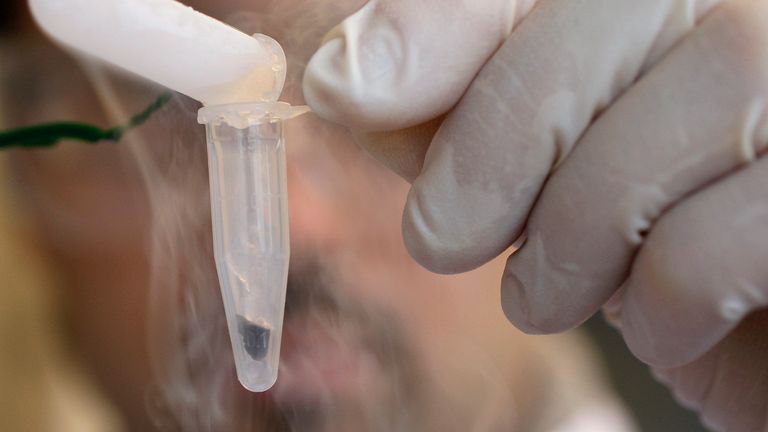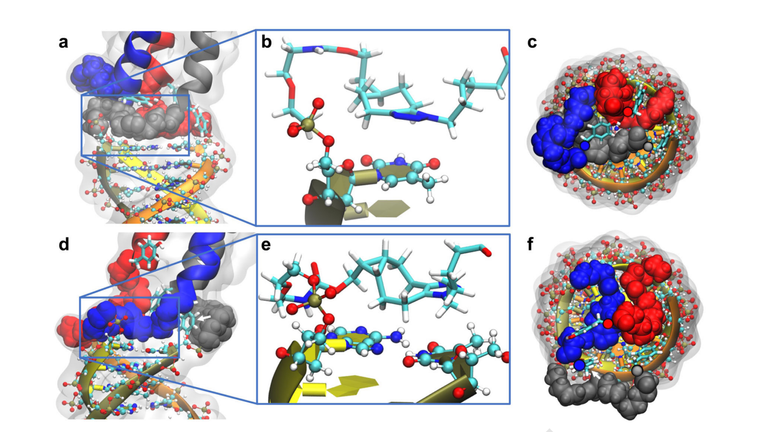Researchers hail new 'supermolecule' which has 'the potential to revolutionise science'
The new "supermolecule" has been described as a marriage between two crucial biomolecules that underpin life: DNA and peptides - despite these molecules rarely interacting in nature.
Monday 10 January 2022 11:37, UK
Researchers have created a "powerful supermolecule" in a "tremendous" interdisciplinary study, which they say has the potential to revolutionise science.
The new molecule has been described as a marriage between two crucial biomolecules that underpin life: DNA and peptides - despite these molecules rarely interacting in nature.
As a molecular tool, the discovery could be used for multiple purposes, including creating new medicines and artificial proteins that are less vulnerable than natural ones to being degraded.
DNA and peptides
DNA is the basic structure for storing humanity's genetic information, while peptides are chains of amino acids. Both molecules are essential to life, but in nature they are rarely linked because they have opposite chirality.
Explaining chirality, co-author Professor Hanbin Mao, of Kent State University in the US, said: "Imagine you want to stack your two hands by matching each finger while both palms face the same direction.
"You will find out it is impossible to do it. You can only do this if you can trick your two hands into having the same chirality."
DNA and peptides usually don't interact because peptides are left-handed while DNA is right-handed in terms of their chirality.
But the new research has managed to change the chirality of peptides, unlocking a "very powerful molecular tool," according to Dr Chenguang Lou, corresponding author and associate professor at the University of Southern Denmark.
"We're living in a chiral world," Dr Lou explained to Sky News, "which means every biomolecule has its own chirality. We have proved that these two chiralities can interact, which has never been discovered before at the larger molecule level."
The discovery "may lead to the next generation of nanotechnology", added Dr Lou, potentially empowering researchers to better detect and treat diseases.
By reshaping peptides, the team believes it could replace the amino acid skeleton that many proteins use.
"One of the possible directions following this half DNA, half peptide hybrid technology is to basically try to replace those peptide skeleton structures using only the nucleic acids," he added.
In doing so, these new proteins could be more robust to ultraviolet light, heat, and chemical reagents, and help scientists "understand how we can create artificial enzymes as efficient as the natural ones", Dr Lou said.
"Our next step will be to investigate whether it can be used to explain the cause of Alzheimer's disease in which malfunction peptides are culprits," added Professor Mao.
Dr Lou said the research was an interdisciplinary study due to his team's specialism in chemistry and the American team's expertise in biophysics.
"To push the research activity forward within the past one year and half, from my point of view, is quite tremendous," he added.
"In terms of the forthcoming applications, we would try to create more powerful molecular machines combining these two nano-world Lego bricks."





